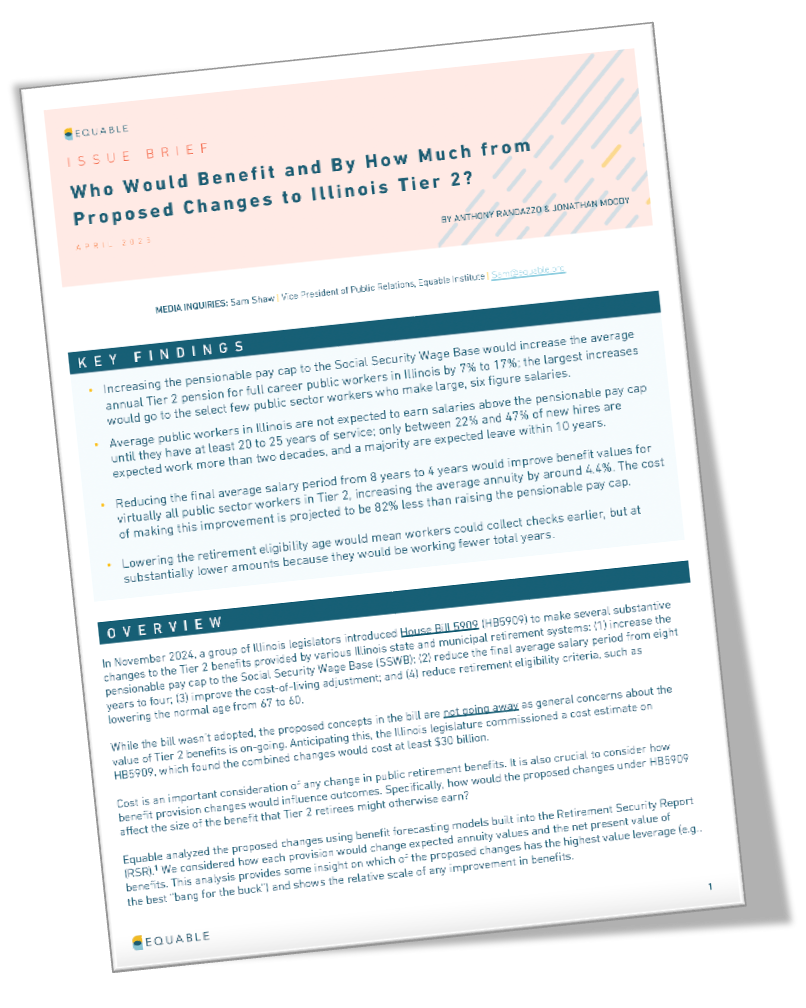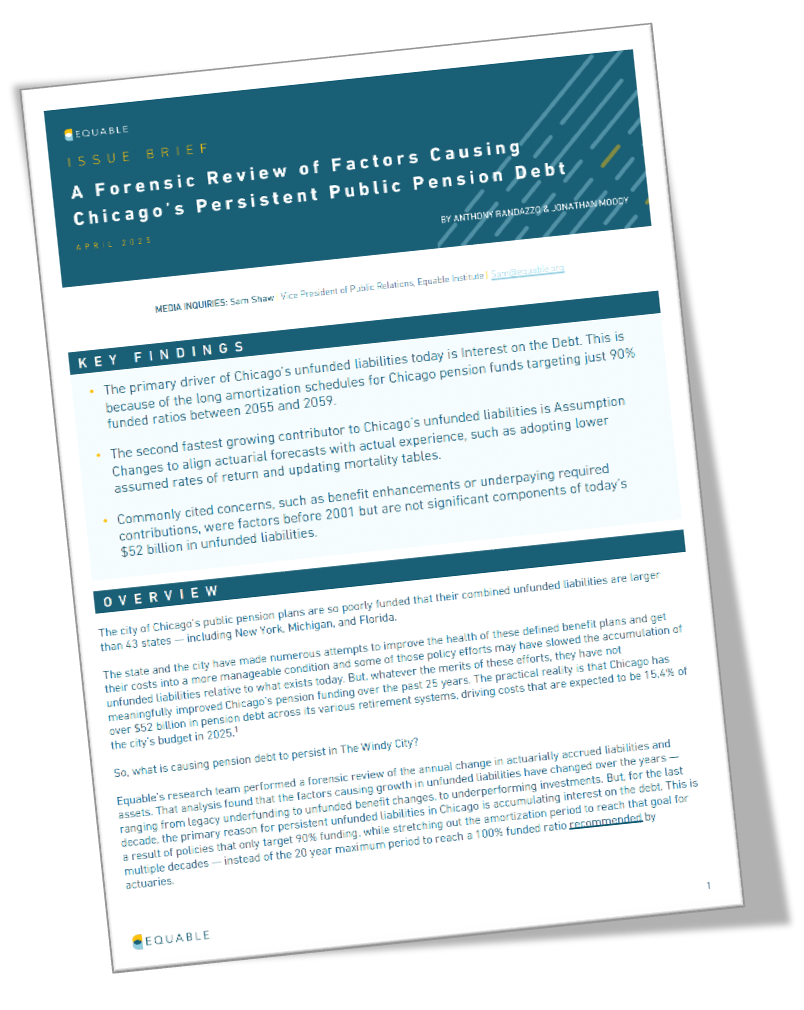Today, Equable Institute issued complementary briefs on two important pension issues facing the state of Illinois. The first brief assesses proposed improvements to Tier 2 pension benefits, revealing certain changes would provide more value to public servants than others while imposing vastly different costs on taxpayers. The second brief is a forensic review of the sources of Chicago’s $56 billion in pension debt that finds that interest accumulation is the primary challenge to healthy funding levels.
The two briefs reflect the interconnected nature of concerns about the adequacy of Illinois public retirement benefits and the costs of pension debt to finance the government’s promises. Last year, labor groups supported multiple improvements to Tier 2 benefits as proposed in House Bill 5909. During the current session, similar provisions have been included in Senate Bill 2. Governor Pritzker also included a provision to fund an improvement to benefits to ensure compliance with federal law in his recently proposed budget.
At the same time, the financial future of Illinois’ pension funds has been drawn into stark relief over the past several days. The stock market turmoil caused by the Trump Administration’s proposal of near-universal global tariffs has resulted in billions of dollars in additional losses for pension funds across the country. In fact, Equable estimates that Chicago pension funds have lost $1.58 billion in value in 2025, with $938 million in losses occurring during the seven day tariff crash. While markets may be stabilizing, experts still anticipate unprecedented market volatility and warn of a potential recession in the coming months. That means Illinois will need to be very intentional about how they choose to manage pension funds.
Issue Brief 1 | Analyzing the Costs & Benefits of Proposed Changes to Tier 2
In the aggregate, Illinois pension plans are only 51.6% funded as of 2024, with unfunded liabilities exceeding $211 billion. Any proposed enhancement of benefits would require additional funding and add to government liabilities—a particular concern when state and city pension systems are already in financial distress. At the same time, there is a legitimate need to ensure Illinois doesn’t fall out of compliance with Social Security “safe harbor” provisions. The benefit values provided by Tier 2 are also among the worst in the country for those who serve less than 20 years. Addressing these concerns, Equable’s brief evaluates the costs and benefits of each of the proposed changes to Tier 2, as proposed in HB5909 (2024) and SB 2 (2025).
“Concerns about the adequacy of Tier 2 benefits are more than reasonable,” said Equable executive director Anthony Randazzo. “But some of the proposed ways to improve benefits only help a narrow subset of public workers, while for similar costs other policy changes could help all workers covered by Tier 2 have a stronger path to retirement security. It is important for policymakers to consider not just the long-term budget effects of any change that would increase liabilities, but how the widest possible group of public servants can be helped with whatever dollars are made available to improve pension benefits.”
 READ & DOWNLOAD THE BRIEF
READ & DOWNLOAD THE BRIEF
Issue Brief 2 | Evaluating the Factors Causing Chicago’s Persistent Pension Debt
While state leaders are wrestling with appropriate benefit levels, policymakers in Chicago are particularly focused on how pension costs are affecting budgets. The city of Chicago faces $56 billion of unfunded liabilities alone. Currently, the city is wrestling with both its own structural budget challenges as well as debates with the Chicago Public School board over how to handle non-teacher benefit costs.
Equable has completed a forensic review of the drivers of pension debt in Chicago to aid in managing future costs resulting from benefit changes, while still addressing the factors that have resulted in the accrual of unfunded liabilities for the city. “There are numerous theories about what has caused Chicago’s pension funding challenges, many of which are misunderstood or based on outdated information,” said Randazzo. “Our analysis shows that today’s pension debt is primarily driven by interest accumulation due to lengthy repayment schedules. Understanding how this might be affected by benefit enhancements and future budget efforts to constrain pension costs is essential for developing a better policy plan to escape Chicago’s pension debt paralysis.”

READ & DOWNLOAD THE BRIEF

